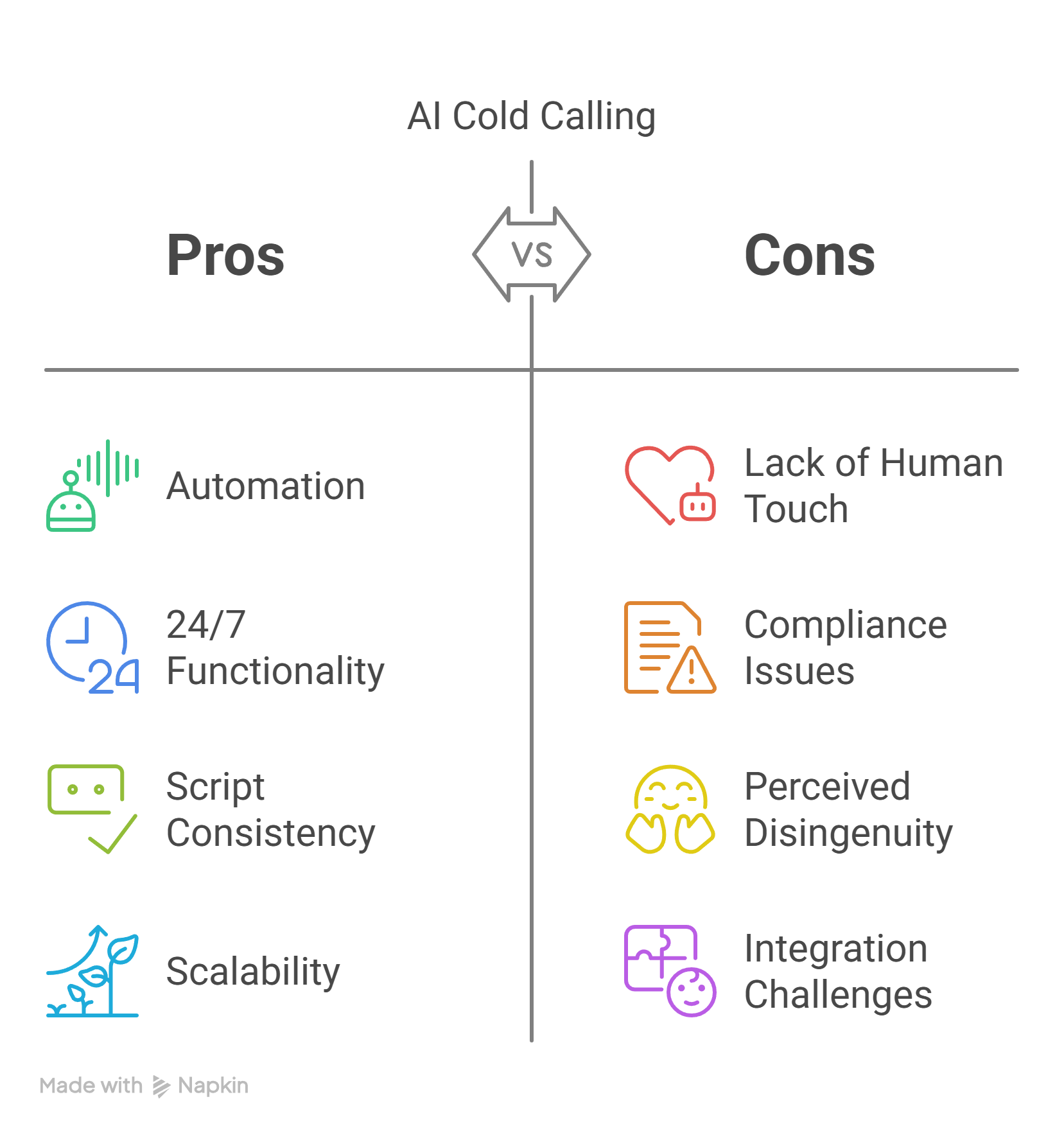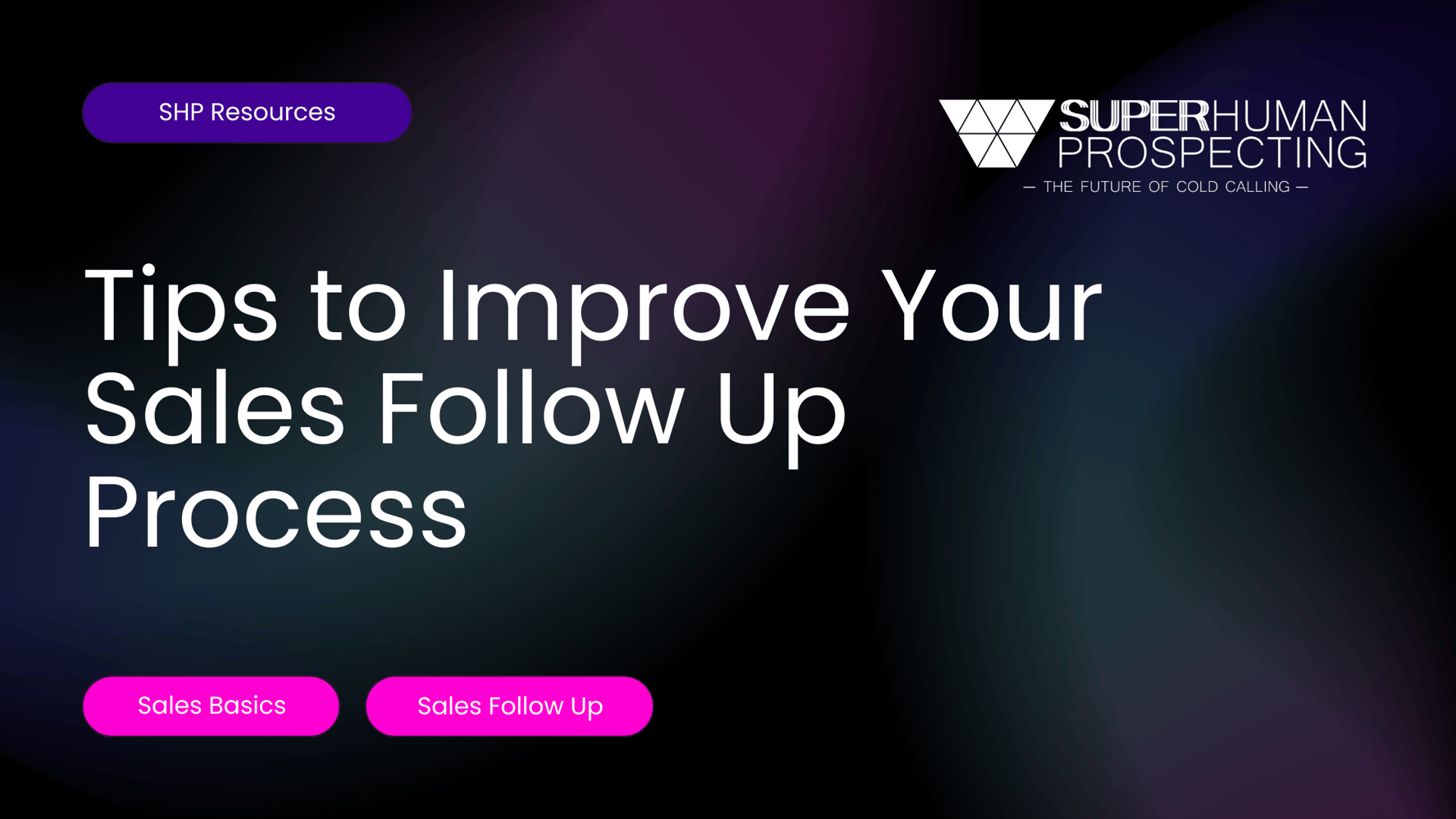Artificial intelligence (AI) has made a significant impact across various industries, and sales development is no exception. One notable trend is the growing use of AI-powered Sales Development Representatives (AI SDRs) to handle tasks like prospecting, outreach, and lead qualification. These tools promise to streamline workflows, improve scalability, and reduce costs. However, their adoption isn’t without controversy. Questions persist about their real effectiveness and whether they introduce new hurdles, particularly around legal compliance and maintaining the “human” connection in sales. This article takes a closer look at AI SDRs, examining their capabilities, limitations, the hotly debated practice of AI cold calling, and the legal and ethical issues that come with their use
What Are AI SDRs?
At their core, AI SDRs are digital solutions powered by advanced machine learning algorithms and large language models (LLMs) that handle traditionally human-intensive sales development activities. These activities include:
- Lead identification and scoring
- Outreach automation (via email, calls, or social media)
- Follow-up scheduling
- Personalized messaging suggestions
- Meeting booking
Rather than replacing human SDRs outright, AI SDRs are often marketed as an augmentation, taking over repetitive, low-value tasks while allowing sales teams to focus on closing deals. This means more time-efficient workflows and higher scalability, especially in industries where sales pipelines require outreach to thousands of potential buyers.
The Effectiveness of AI SDRs
1. Efficiencies and Scalability
AI SDRs put automation front and center in the sales process, revolutionizing how outreach is handled. By analyzing large volumes of customer data and recognizing behavioral signals, these tools help focus efforts on the prospects most likely to convert. For example:
- AI tools can analyze real-time data to identify when a prospect is likely to buy or engage, a practice referred to as “signal-based selling”.
- Automated workflows mean AI SDRs can send personalized emails or engage via outbound calls to thousands of contacts in minutes.
Such increases in scale would be unachievable for a human-only team without significantly higher costs, especially when considering salary and administrative expenses.
2. Cost Reduction
AI SDRs are often viewed as a cost-saving mechanism. Unlike human team members, these AI-driven tools work around the clock without experiencing fatigue. The transition from humans having to use a software to perform a task to the software just completing the service highlights a strategic edge where the platform not only supports sales teams but can also operate independently in many cases. This shift potentially minimizes the need for growing human sales teams, paving the way for more streamlined and cost-effective operations.
3. Hyper-Personalization
Advanced AI SDRs leverage enriched customer data to deliver highly personalized outreach. They can compose emails that address a prospect’s specific business challenges or adapt cold call scripts based on factors like job titles, company information, or trends in their online behavior. This level of personalization often leads to stronger engagement rates compared to more generic approaches.
4. Enhanced Analytics and Feedback Loops
AI SDR platforms continuously learn and improve over time. By analyzing sales data and buyer responses, they refine their outreach strategies, providing valuable insights that human reps can learn from. This predictive approach is already enabling sales teams to approach leads more effectively and at just the right time.

Pain Points and Challenges
1. Cold Outreach Limitations of AI SDRs
Despite their potential, AI SDRs sometimes fall short on the nuances of human interaction, particularly when making cold calls. AI-powered cold calling software can handle the logistics—like skipping invalid numbers or adjusting for time zones—but lacks the emotional intelligence to connect with prospects on a personal level. Human SDRs often rely on intuition, humor, and active listening to engage prospects, but AI lacks this adaptability. While AI can “sound human” with natural language generation, it can stumble when conversations require empathy or an in-depth understanding of unique objections. In B2B scenarios, where decision-making processes are more complex, this robotic nature can alienate potential buyers.
2. Risk of Oversaturation
One critical issue with AI SDRs is the potential to flood inboxes and phone lines with high volumes of automated outreach. While high volume might initially seem beneficial, it can backfire as prospects become frustrated with impersonal or overly frequent messages. Buyers are getting better at spotting AI-generated content and may even mark it as spam, which can ultimately hurt effectiveness.
3. Data Quality and Dependence
AI SDRs rely heavily on clean, accurate, and comprehensive data to perform well. When prospect data is incomplete or outdated, it leads to irrelevant messaging and wasted resources. For instance, targeting the wrong job roles or using old contact details can not only be ineffective but also harm your brand’s reputation. To truly unlock the potential of AI SDRs, companies need strong data management systems in place.
4. Integration Challenges
AI SDR platforms need to be integrated into existing sales stacks, which can be a cumbersome process, particularly for businesses with less mature tech ecosystems. Systems failing to synchronize (e.g., CRM tools or marketing automation software) can make workflows disjointed rather than streamlined, reducing the overall effectiveness of sales operations.
The Debate on AI Cold Calling
Cold calling remains a critical yet controversial component of sales development. The introduction of AI into this domain has triggered passionate discussion among sales professionals. Here are the key arguments:
Pros of AI Cold Calling
- Automation of Repetitive Tasks: Predictive dialers powered by AI can filter out invalid numbers and ensure calls are made to verified leads, reducing wasted time.
- 24/7 Functionality: AI cold calling systems can handle global outreach effectively without concerns of time zones or burnout.
- Script Consistency: AI SDRs ensure adherence to scripts, minimizing errors or inconsistencies that naturally arise with human callers.
- Scalability: These tools can handle call volumes that are far beyond human capabilities.
Cons of AI Cold Calling
While AI cold calling is efficient, it struggles with context-specific or unpredictable scenarios. For example:
- Prospects often resist opening up to AI callers due to a lack of “human touch” or genuine conversation.
- AI systems cannot always respond dynamically to complex objections or sudden topic shifts.
- Additionally, prospects may perceive AI cold calling as disingenuous, fostering trust issues.
- Regulations require AI SDR’s to inform prospects they are AI, which creates an initial roadblock to conversations.
As it stands, AI cold calling is effective in highly transactional sales or lead qualification. However, when deeper conversations are necessary, it still falls behind human execs.

Legal and Ethical Concerns
Data Privacy and Compliance
A growing concern surrounding AI SDRs is their compliance with global data protection laws like GDPR, CCPA, and other privacy regulations. AI SDRs rely on large amounts of personal data to generate insights and create outreach messaging, but mismanaging that data—like collecting, storing, or using it without proper authorization—can result in hefty fines and damage to a company’s reputation. On top of that, AI systems often lack transparency about how they gather and use data, making compliance even trickier. Businesses need to set clear standards for how their AI SDRs operate to ensure they stay aligned with ever-changing legal requirements.
Calling Regulations
Legalities around cold calling add another dimension to consider. Many regions now have stricter rules against unsolicited calls, including opt-in requirements for outreach. Additionally, many countries including the US are starting to adopt regulations geared specifically to AI outreach. For example, in 2024 the FCC announced the unanimous adoption of a Declaratory Ruling that recognizes calls made with AI-generated voices are “artificial” under the Telephone Consumer Protection Act (TCPA). This makes it a requirement for AI SDR’s to identify themselves as AI at the start of any calls made to a prospect. Misuse of AI SDR software could result in violations of telemarketing laws and lead to fines or blocked services.
Ethical Outreach
Buyers may feel uneasy about interacting with an AI SDR, especially if the technology isn’t disclosed transparently. This raises ethical questions regarding consent and deception. Companies must carefully consider such issues and build outreach campaigns that prioritize prospects’ comfort and explain the use of AI upfront.
Future Outlook for AI SDRs
The future of AI SDRs is promising but contingent on significant advancements and adjustments:
- Improved Personalization and Contextual Awareness: Future AI SDRs will likely strike a better balance between automation and personalization, utilizing deeper data insights to create more natural, meaningful conversations.
- Responsible AI Use: Organizations must aim for campaigns that pair AI efficiency with ethical standards, prioritizing authenticity over aggressive outreach.
- AI Collaboration with Humans: Instead of replacing humans, AI SDRs will serve as co-pilots, enhancing human SDRs by automating basic tasks while allowing them to handle complex conversations that require intuition, negotiation, or relationship-building.
Conclusion
AI SDRs offer immense benefits, such as scalability, automation, cost reduction, and efficient workflows. However, their current limitations—namely in emotional intelligence, handling nuanced tasks, and potential legal risks—highlight that they aren’t a one-size-fits-all solution. While AI SDRs can enhance a sales team, they can’t yet replace the human touch that’s essential for building trust and closing deals. For companies considering AI SDRs, it’s important to balance the benefits of efficiency and scale with the risks of legal compliance issues, outreach fatigue, and loss of authenticity. The key is to use AI responsibly by making it part of a well-rounded sales strategy that prioritizes strong data, ethical practices, and the irreplaceable skills of human reps. With rapid developments on the horizon, AI SDRs are more than just a trend—they’re a game-changing tool that, when applied thoughtfully, can redefine the future of sales development.







